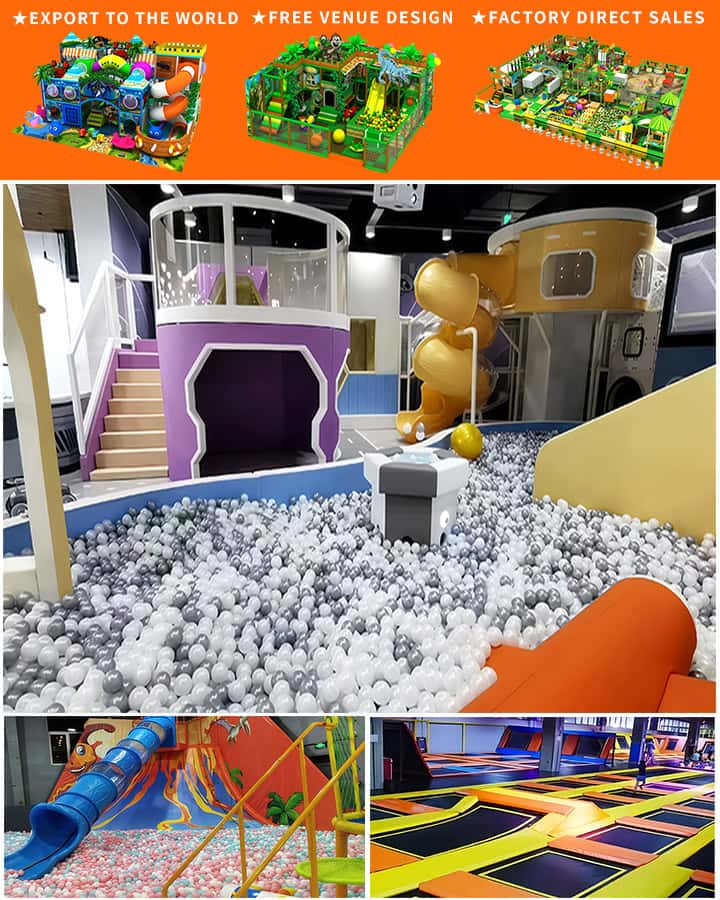Playgrounds are essential spaces that foster physical activity, social interaction, and imaginative play. While traditional playgrounds are typically located outdoors, indoor playgrounds have become increasingly popular, providing year-round fun regardless of weather conditions. Both indoor and outdoor playgrounds offer unique benefits and features tailored to various age groups and interests. This guide will explore the characteristics, advantages, and considerations of both types of playgrounds to help you make the most of these vibrant environments.
Indoor Playgrounds: A Sheltered Haven for Active Fun
Indoor playgrounds have surged in popularity, especially in urban areas where open space can be limited. These facilities often feature a range of climbing structures, slides, ball pits, trampolines, and interactive games designed to engage children’s physical and cognitive abilities. One of the primary advantages of indoor playgrounds is their ability to provide a safe and controlled environment, free from weather-related concerns.
Key Features of Indoor Playgrounds:
- Climbing Structures: Enhance motor skills and balance as kids navigate ladders, ropes, and platforms.
- Ball Pits: Encourage sensory exploration and physical activity through jumping and diving.
- Trampolines: Promote cardiovascular health and coordination while offering exhilarating fun.
- Interactive Games: Develop cognitive skills through educational and entertaining activities.
- Soft Play Areas: Ensure safety for younger children with padded surfaces and smaller structures.
Benefits of Indoor Playgrounds:
- Weather-Proof: Ideal for rainy days, snowy winters, or extreme heat, ensuring consistent access to recreational opportunities.
- Safety: Controlled environments reduce the risk of injuries from falls or exposure to hazardous elements.

- Social Interaction: Facilitate social development by creating spaces where children can interact and collaborate with peers.
Outdoor Playgrounds: Nature’s Playground
Outdoor playgrounds remain a beloved fixture in communities around the world. These spaces harness natural elements to create expansive areas where children can run, jump, climb, and explore in the fresh air. The design of outdoor playgrounds often integrates local landscapes, providing a connection to nature that indoor settings cannot replicate.
Key Features of Outdoor Playgrounds:
- Swing Sets: Classic equipment promoting coordination and balance.
- Slides: Offer thrilling descents that encourage physical activity and excitement.
- Climbing Walls: Build strength and problem-solving skills through vertical challenges.
- Seesaws: Teach cooperation, balance, and cause-and-effect relationships.
- Open Space: Allow for spontaneous games like tag or soccer, enhancing gross motor skills and teamwork.
Benefits of Outdoor Playgrounds:
- Physical Health: Encourage regular exercise and movement, contributing to overall physical fitness.
- Mental Health: Exposure to sunlight boosts Vitamin D levels and mood, reducing stress and anxiety.
- Connection with Nature: Foster an appreciation for the outdoors, promoting environmental awareness and conservation.
Considerations for Both Environments
While both indoor and outdoor playgrounds provide valuable recreational opportunities, it’s important to consider specific factors to ensure a safe and enjoyable experience:
Safety First:
- Supervision: Always monitor children closely to prevent accidents and intervene if necessary.
- Maintenance: Regularly check and maintain equipment to ensure structural integrity and hygiene.
- Appropriate Equipment: Choose playgrounds with suitable structures and surfaces for the child’s age and developmental stage.
Inclusive Design:
- Accessibility: Ensure playgrounds are equipped with features that accommodate children of all abilities.
- Variety: Offer diverse activities to cater to different interests and physical capabilities.
Community Engagement:
- Programs: Participate in community events or classes held at playgrounds to enhance social learning experiences.
- Feedback: Engage with local authorities to advocate for improvements or new installations based on community needs.
In conclusion, whether nestled under a roof or sprawling beneath the sky, indoor and outdoor playgrounds each bring their own brand of joy and developmental benefits. By understanding their unique features and considering key safety measures, we can maximize the potential of these spaces to inspire active, healthy, and happy childhoods. So, let the adventure begin—both indoors and out!




